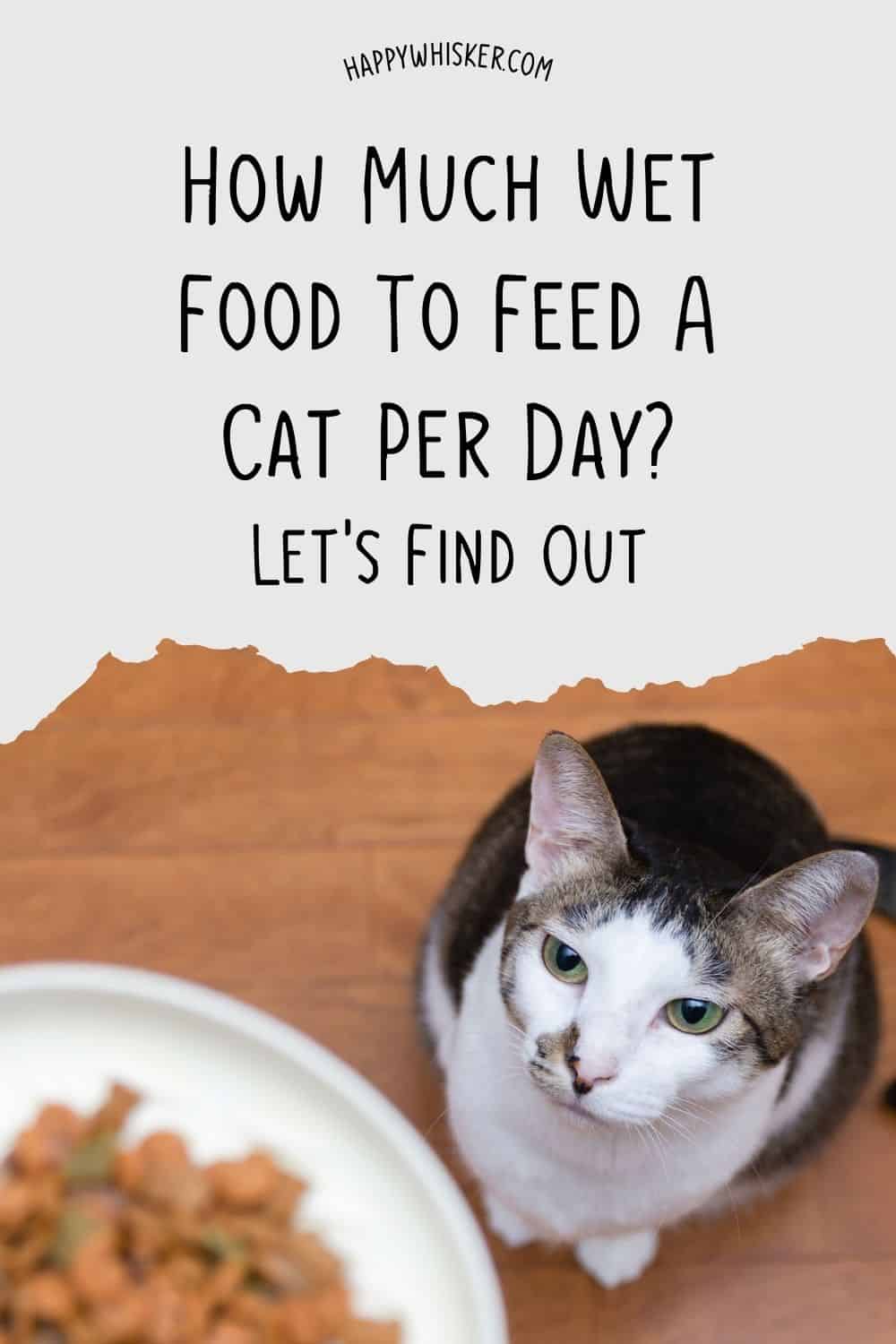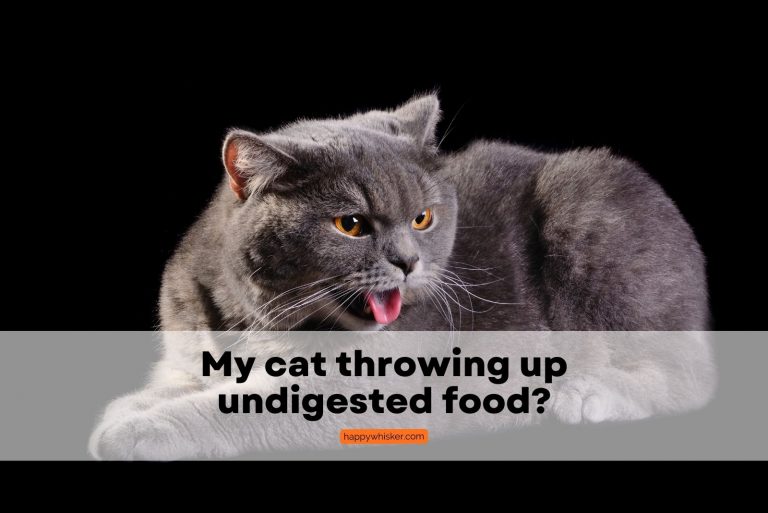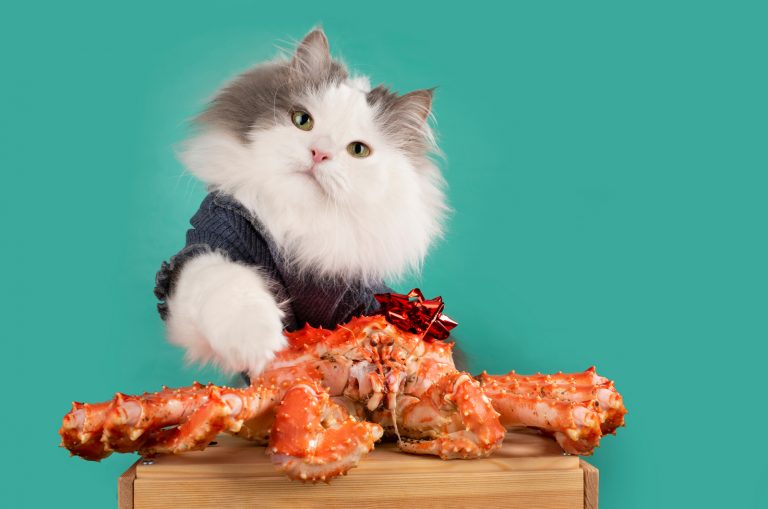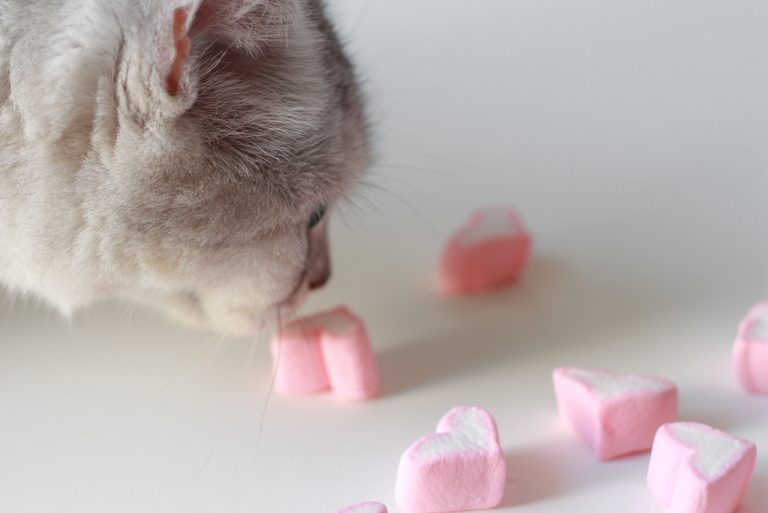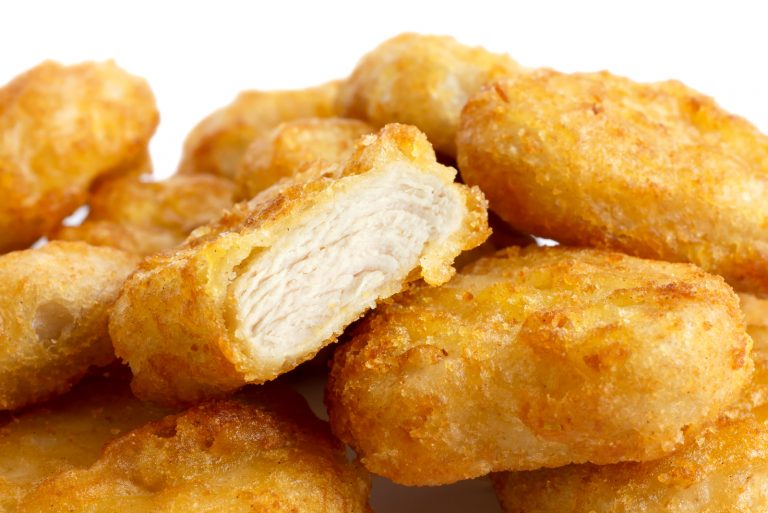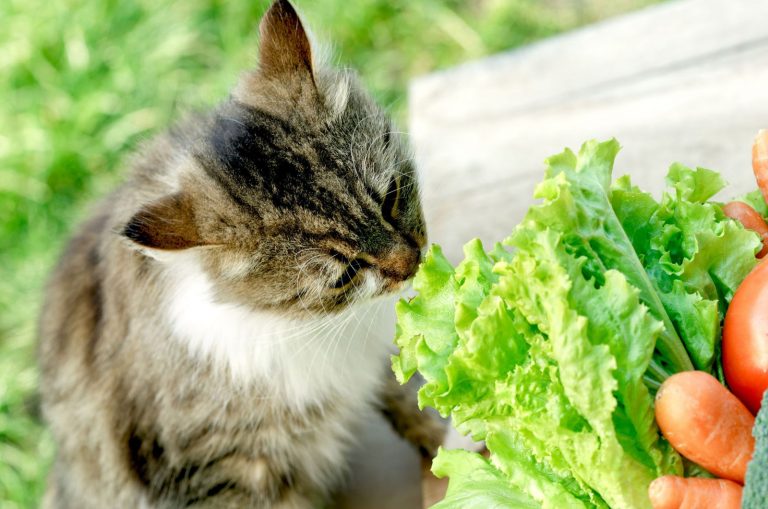How Much Wet Food To Feed A Cat Per Day? Let’s Find Out
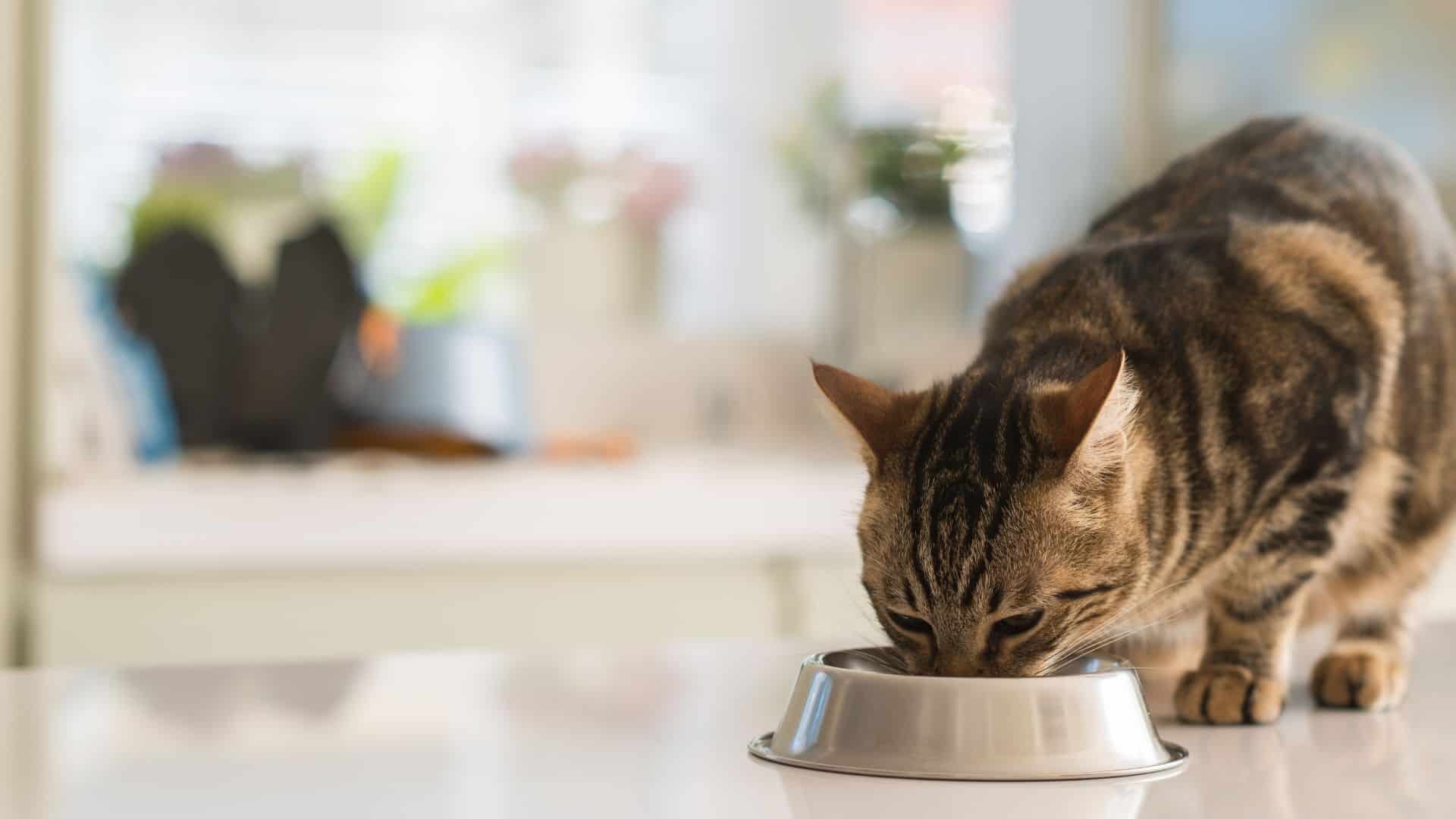
I feed my cat five times a day; three of her meals consist of wet food and the rest is dry food, with occasional treats.
However, how much wet food to feed a cat and the number of meals you’ll give your cat, depends on the caloric content of the food type, your cat’s age, activity levels, and so on.
We all want healthy cats, but we’re the ones who influence our cat’s health. For example, if your cat is prone to weight loss, then it will need more calories than the feeding recommendation stated on the canned food. Read on to learn more about it!
How Much Wet Food To Feed A Cat?
Cats can eat wet food on a daily basis, it is actually desirable, but what’s critical is the portion size. Every cat has different caloric needs, so the number of calories per day is equally important as the overall amount of food your cat eats per day.
Let’s have a quick look at this brief overview of how many calories a cat needs every day.

The first thing you need to do when deciding on the portion size of wet food for your cat, is talk to your vet. This way, you’ll know what your cat’s weight is and what is a healthy weight for its age.
How much wet food to feed a cat is not the only important thing; what’s even more important is how many calories your cat needs every day. For this, you can also use a pet calorie calculator – you can see some general examples in the table above.
If your cat is obese, your vet will probably propose prescription meals. The next thing you need to do is to check the labels on the cat food before you choose it.
It’s recommended that you always do this with any cat food because you need to check the ingredients and calories. You’ll also see the recommended portion size, but these are usually vague, and you shouldn’t blindly follow them.
See also: Top 5 Choices Of Homemade Cat Food To Gain Weight
Factors Influencing The Portion Size
It can be quite difficult to determine the portion of wet food you should give your cat. The average serving for your cat will depend on a few factors, such as the cat’s weight, age, energy, etc.
• Age – adult cats undoubtedly have different nutritional needs than senior cats or kittens. Also, pregnant or nursing cats have their own nutritional needs and diet plan.
• Type of food – dry cat food is different from wet cat food, especially when you take the calories into consideration. You need to discuss the diet plan with your vet, so you’re sure you’re feeding your cat the proper amount of food per day.
• Cat’s weight – if you have an overweight cat or if your cat isn’t its ideal weight in any way, you’ll need bigger or smaller portions of food until your cat reaches a healthy weight.
• Energy level – active cats will require more calories – so more food – than cats who are lazier.
Why Is Food Portion Size Important?
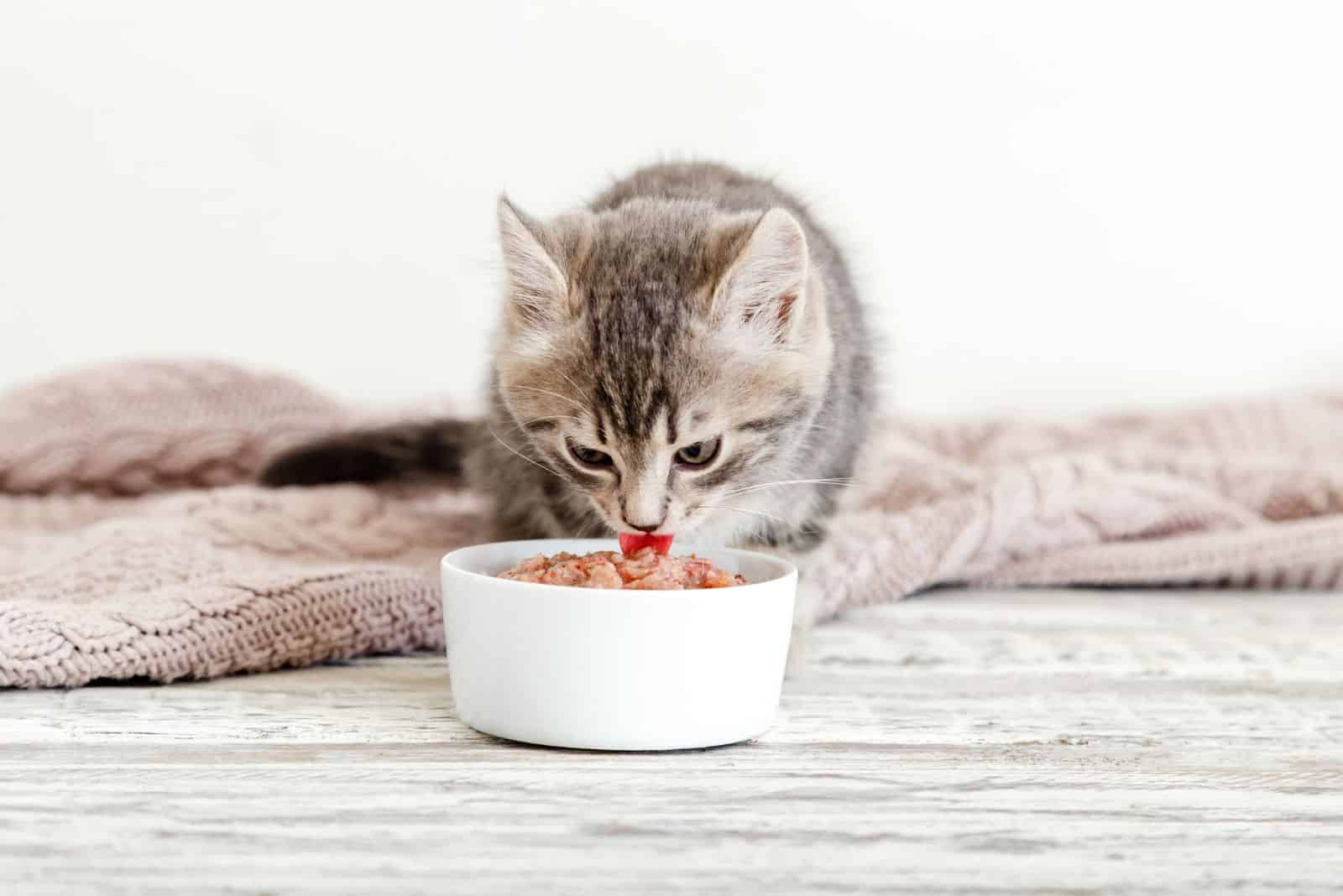
Most cat owners serve the amount of wet food that’s in the can without contemplating whether it is enough or maybe too much. However, calculating and deciding on the amount of food you’re going to feed your cat is very important.
Obesity is a common issue in cats, in all parts of the world, especially in the USA. It can have a significant negative impact on your cat’s health and well-being.
Cats that are overweight are also more likely to develop cardiovascular diseases and other health complications. Obesity in cats is also linked with certain types of malignancies.
As a result, it is your responsibility to actively pay attention and take care of your cat’s nutrition and health. Indoor cats don’t burn enough calories because, in most cases, they’re not as active as they should be.
This is why they are more prone to excessive weight gain. It’s your responsibility to ensure that you’re feeding your cat the appropriate amount of food.
So, as you see, feeding your cat the proper diet and amount of food is critical. Also, always choose high-quality food and ingredients.
Check out: How Much Should A 10-Week-Old Kitten Eat? An Owner’s Guide
Benefits Of Wet Food Summed Up
There are numerous advantages to feeding your cat wet food, and the most important advantage of wet food is hydration. Wet foods are typically meat-based and grain-free, allowing for higher moisture content.
Cats rarely drink water, despite the fact that hydration is critical. Older cats are less interested in drinking water and frequently do not drink as much as they should.
UTIs and FLUTD, urinary stones, and general urinary tract problems are fairly common in cats. A lack of hydration can contribute to many health issues, like UTIs or FLUTD, which no cat owner wants.
This is why you should plan a healthy food diet that includes a good balance of wet and dry foods. Wet food can aid in hydration, lowering the risk of UTIs and kidney disease.
Wet food can be eaten by old cats or cats who have lost teeth (or had their teeth extracted), whereas dry pet food can be difficult to chew. Additionally, wet food is a lot easier to digest, so it’s helpful with cats who have digestive issues.
Wet Cat Food Vs. Dry Cat Food
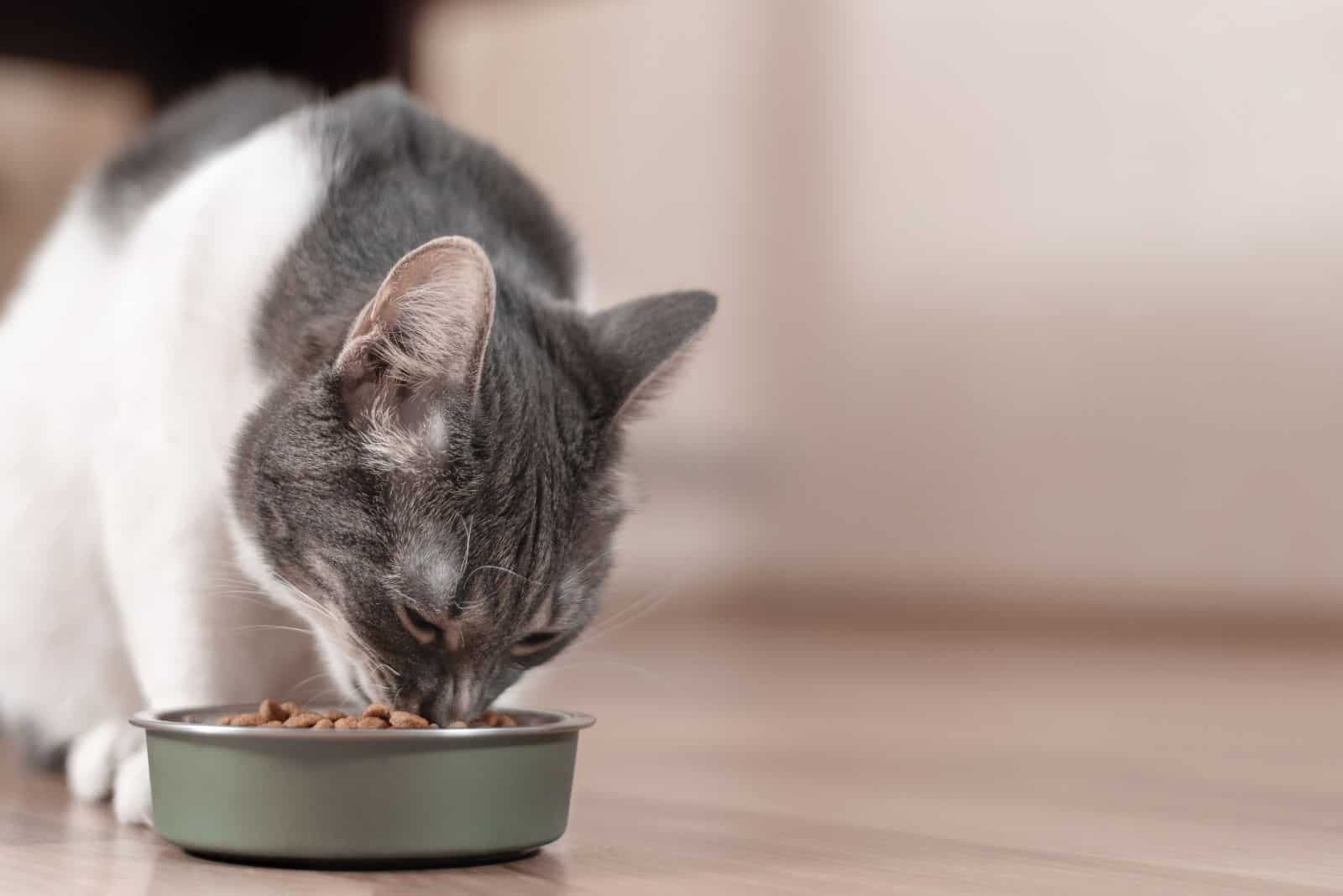
There are many differences between dry cat food and wet food. Understanding how these different foods can nourish your cat in unique ways can help you greatly. First of all, wet food contains more water and more moisture than dry food.
Dry cat food contains about 10% moisture. The rest consists of carbohydrates, vitamins, and fats. On the other hand, moisture is the main thing about wet food, most of them contain around 70% moisture.
Your cat may have a medical condition that causes them to benefit from more fluid intake, which means wet food is better suited for them. Wet food is suitable for any pet, with or without health conditions.
Dry food is good for your cat’s teeth and helps in the prevention of tartar and plaque buildup, but wet food provides extra moisture and keeps your furry friend hydrated. The next difference between dry and wet cat food is in the food-making process.
Wet cat foods are usually made with frozen or fresh meat due to their high water content. Wet food generally contains a grain-based protein source, where the meat is mixed with vitamins, fats, and water.
The mixture is canned, and the heating process ensures the absence of food-borne pathogens.
How Different Are They?
They are very different, primarily because dry foods usually combine minerals, fats, meats, and vitamins and are cooked at high temperatures.
Additional fat can be sprayed onto the dry food. The reason this step is often necessary is that fat makes it tastier. The final difference is that the nutritional content varies depending on the type of cat food you feed your pet.
For example, dry food usually contains a lot more carbohydrates than most pet canned foods. Some cat food formulas may also contain probiotics (this depends on what type of food you feed your cat).
Also, the protein-to-fat ratios of these two foods vary by brand and type, so it’s a good idea to check each product when you’re comparing. It is recommended that you check the ingredients and nutritional values of any cat food you decide to buy.
Why Is Wet Food Important?
The main reason for giving wet food to cats is its high moisture content. This is especially important if your cat has certain health problems, like kidney disease, or is prone to dehydration.
Wet cat food is especially effective if your pet has a medical condition that requires them to consume more water than the average domestic cat normally needs.
Another reason why giving your pet wet cat food is a good idea is that it is generally considered very yummy.
Should You Feed Your Cat Both?
Should you include both wet and dry food in your cat’s daily diet plan? That’s definitely a great idea. Both dry and wet foods are required and highly recommended for cats.
Dry foods are full of fiber which is great for a cat’s digestive system, whereas wet cat foods contain moisture and necessary nutrients.
When you combine these two foods, your cat gains all the necessary nutrients, fats, proteins, vitamins, and all that is needed for a nutritious balance.
You might also want to check out: Best Cat Food For Older Cats That Vomit: Top 18 Choices
FAQ

Is it OK to give cats wet food every day?
Wet food, in general, is better for your cat’s digestion than dry food, and including the two in your cat’s daily diet plan is the best solution. Cats can eat wet food every day, it’s even recommended to have wet food in their everyday meal plan.
What is the minimum amount of wet food I can feed my cat?
Most wet cat foods come packed in 3-ounce cans, and that is the average minimum of wet food your cat should eat per day. You can increase or decrease the amount, but it’s best you discuss it with your vet and set up a diet plan you can follow.
What should I do if my cat doesn’t want to eat wet food?
If your cat doesn’t want to eat wet food, start with a small amount mixed in with his or her favorite dry food. Then, you just add more wet food in the next meal until there is no need for you to mix the two together.
You can also splash your cat’s favorite treats on top of the wet food content, grind up some dry food and mix it in the wet cat food, or try out different brands until you hit the jackpot.
See also: Why Doesn’t My Cat Want To Eat Wet Food?
Finally…
It’s pretty clear that wet food is highly beneficial for your feline friend, as long as you plan out your cat’s diet and consider the factors that influence the portion size of both wet and dry cat food.
The amount of wet food you feed your cat will depend on its age, weight, overall size, activity levels, and the type of food you buy. It’s best to set up a diet plan with your vet and stick to it, unless you see it doesn’t work for your cat.All in all, a healthy combination of dry food and wet food is the best choice for a healthy cat.
Like this post? Share or pin it for later!
